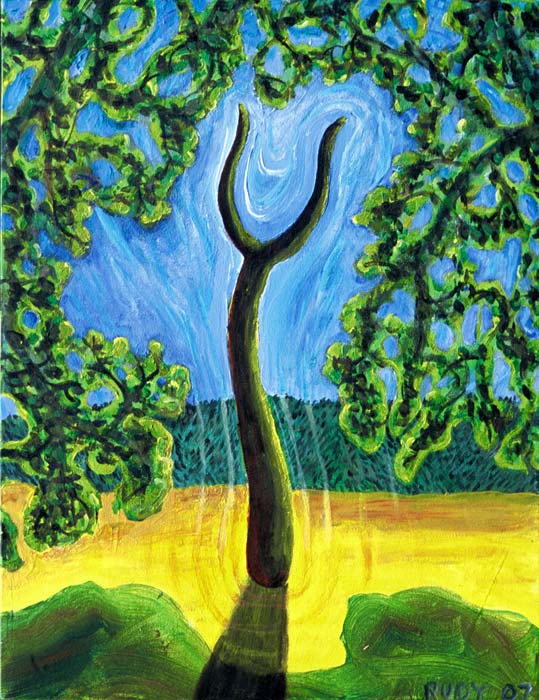
The Masonic Dream Engine
by Th. Metzger

Join me, and stand at Mozart’s grave, which is my mind. Here, within, lies the mortal remains of genius. He was buried in a lost pauper’s hole, which is also my skull. Unmarked, and later moved. Filled with ash, with jewels, with lichen-crusted fragments of bone and with the echo of an echo. A grave robber claimed to have taken his skull and now there are a dozen such, floating around European museums and sleazy relic shops. A man in a long overcoat hisses, “hey buddy, wanna buy the skull of the Genius?” I asked, “why is it so small?” He replies, in an even softer whisper, “because this is his skull when he was a boy.”
He is, I am, we are: the Lone Nut, the second coming of icy blue genius, the third eye (purple and wide awake), the Fortieth symphony, and the Fifth Horseman of this Teutonic apocalypse.
I am the graveyard prowler, the black shrouded man who commissioned the last requiem. I am the obelisk hunter, the anonymous brother for whom he composed his gorgeous “Masonic Funeral Music”.
In 1784, Mozart joined the Viennese Masonic lodge “Beneficence.” The next year William Billings (the first great American composer) wrote the tune which now goes by the same name. Contemporaries, though utterly unknown to each other, they reflect each other in the Magic Mirror. Mozart: pure German, professional since the age of four, passionate and perfect. Billings: echt Americanische: a brilliant amateur, clubfooted, and a tanner by trade, stinking perpetually of rotted cow hides.
Now, wrapped in mink, ermine and fox, the rich and supposedly beautiful come in pilgrimage to the Salzburg Festival. They come to bask in the Mozartian shimmer. Limousines, private jets, concerts and exclusive hotels. Face-lifts, platinum died hair, gleaming golden teeth. Aristocrats, plutocrats, Eurocrats. But Mozart’s body is gone, lost, risen and flown to the far side of the globe.
Mozart turned inside out is Zartmo, silver-tongued prophet of Osiris, The Brain from Planet Salzburg. They dug up his grave and found him there, his coffin filled with paper, furiously erasing his scores. Somebody asked him what he was doing and he said, “whattaya think? I’m decomposing.”
I’m staring into Zartmo’s holy hole: a space with squared-off sides, and little roots poking out, weeping subterranean juice, the tears of rainwater sucked up by probing tendrils in utter blackness now exposed and weeping. I’m chanting The King is Dead - Long Live the King. I’m the Doctor to the Dead claiming back his chiming silver thoughts.
Wrapped in a shroud, he made a coffin of half sleep, and rode the waves in his little night-boat, on the ocean of ink-dreams, lost knowledge, and a five-part fugue state. Across the ocean, little Zartmo floated, German Egypto Columbus.
I hear the churning counterpoint, the indigo ice clangor, the yawwing of the reeds and crystalline brasses. This, this, this, is the harmonie: wind section unleashed, not a beast but a rising wave in the blue-black ocean of brain-night.
The world is flat, but the music of the spheres is in E flat major, Mozart’s Masonic key.
In 1789 he wrote The Magic Flute: absurd, gorgeous, mystical, ridiculous, charming, charmed, the highest of High Egypto flummery. In this, his final opera, Zartmo has the wizard Sarastro intone his most beautiful of bass arias:
“O Iris and Osiris
Send the spirit of wisdom”
Instead, they sent the spirit of divine idiocy. Straight to America, the golden, gibbering genius.
The Mormons claim that Jesus came to the new world and preached to the Indians. But I am convinced that the obelisk atop High Cumorah is the uppermost node on Mozart’s Masonic Dream Engine. The peak, the prong, the pyramidion. He died, became the ghost-lord named Zartmo here in America with his Die Mauerische Traummaschine. The Magic Flute playing in the wilderness.
When the opera was composed, this region had already been burnt by American genocidists, cleansed for the reseeding. Later, this region was called the Burnt Over District for all the religious fervor that flamed here. Revivalists, evangelists, cult leaders and flat out madmen set churches and hearts ablaze. The spiritual flames guttered, then were kindled again and again. But the first burning was real.

The killing ground is peaceful now: corn fields, alfalfa, the sluggish Genesee river. But the martyrs’ memorials remain. Two arrowhead monoliths with brass plaques and the Torture Tree, a three-hundred year old oak big enough around that it takes six men linking hands to encircle it.
In 1779, George Washington - patron saint of Freemasons in America, celebrated later with the largest obelisk in the world - sent a small army into western NY to destroy the Iroquois. Allied with the British during the revolution, the Iroquois, and particular the most feared of the six nations, the Seneca, had raided the American outland settlements of PA and eastern NY. Washington also knew that sending 4,000 soldiers into previously sovereign territory would help his claim on the land, once the war was over.
So General John Sullivan led his sixteen regiments into York State’s underbelly and headed west for the Seneca heartland. Though little combat ensued - the Iroquois and British irregulars were heavily outnumbered - Sullivan’s campaign was successful in carrying out Washington’s wish: to destroy the Iroquois as an independent nation.
Forty towns were burnt to the ground, along with 160,000 bushels of corn. With few human enemies to engage and destroy, the American soldiers vented their rage against the land itself. For weeks, clouds of smoke rolled over the Finger Lakes and Genesee Valley.
“This wayside shrine marks the place where on September 14, 1779, two young soldiers of the Revolution - Lt. Thomas Boyd and Sgt. Michael Parker - met death undaunted in the line of duty after lingering torture. They marked with their blood the western limit in the state of NY of the great struggle for American freedom.”
Ten miles away, where the reconnaissance unit was actually ambushed, is the obelisk. It was dead quiet when I found the spot, with farmland falling away to Conesus Lake. The other way was woods: damp and green and solitary. The obelisk stands in a small, fenced enclosure.
“Sacred to the memory of Lt. Thomas Boyd and Sgt. Michael Parker, who were captured and afterward tortured and killed.
Afar their bones may lie
but here their patriot blood
Baptized the land for aye
and widened freedom’s flood.”
Mary Jemison - the White Woman of the Genesee - was one of those who fled the fiery invasion. Captured as a girl, she’d been carried west, born children to her Indian husbands and trekked to western York State as the American revolution heated up. She was living in Little Beard’s Town when news of Sullivan’s army came to this largest of Seneca settlements. She ran with her children, but after the Americans had gone back the way they’d come, she returned and ended up years later owning hundreds of acres of rich Genesee bottomland. It’s from her memory that a never-corroborated story of the Torture Tree is derived.
As an ancient crone, she told her biographer that when Boyd and Parker were awaiting torture, they approached the Seneca leader Joseph Brant under the sign of the Freemason, which both soldiers were. Brant (who’d traveled to England and was the first America Indian to be initiated into the brotherhood) promised safety to his two secret society brethren. But he was called away and Butler, the British commander, handed them over for torture. Boyd’s body was cut open, his ears and tongue split. He was scalped, partially skinned and beheaded. Sixty-two years later, the bodies of the two were exhumed from the burial mound and removed to their final resting spot, at Mt. Hope Cemetery in Rochester.

Carl Carmer called western York State “a broad psychic thoroughfare of the occult, whose great stations number the mystic seven.” However, there’s no need to limit the numinous hot spots by numerological mumbo-jumbo. A river bed might be a better image and twice-seven a better sample of the Burnt Over District’s most crucial religious sites.
A massive exodus poured across this place. In 1791, when Mozart left the old world for the new, York State’s population was 340,000. Twenty years later it had tripled to nearly a million. But more than land-seekers and escapees from the East coast’s dens and dives rushed across this land. If religious energy - call it faith, call it delusion, call it mania - if this spiritual impulse exists, then it has a life, an organic trajectory. And in the American version, the path of this power is always west.
For the Egyptian dead, the Western Lands were the realm of Osiris, the place of the afterlife. And for the High Egypto Dead-and-not-dead, America is the homeland of the sundered soul.
After Washington’s scorched earth invasion, the first whites to settle in this place were followers of Jemima Wilkinson, otherwise known as the Publick and Universal Friend. Heading west just as The Magic Flute was being readied for the stage, an advance party of Jemimakins set up camp between Canandaigua and Seneca lakes. The Friend herself would arrive shortly after Mozart left his earthly form behind and winged his way west.
Jemima bought 12,000 acres of prime farm land and soon had a grist mill, saw mill and school established for the 250 followers she’d called out from New England to build her new Jerusalem.
She started her ministry as a beautiful sixteen year old Quakeress, aroused to ecstasy by the sermons of George Whitehead in her native Rhode Island. And much impressed by the example of Shaker leader Mother Ann Lee, Jemima found her soul both troubled and excited by holy visions. She was stricken with a fever and fell in to a coma. When she emerged back to consciousness, she claimed her original body had died, “ascended to heaven,” and her body was now inhabited by “the Spirit of Life.” In short, she was no longer Jemima, but a divine vessel.
Soon she was holding open-air meetings and gathering a coterie of followers. Tall, graceful, with thick waves of dark hair and black, penetrating eyes, she had no trouble bringing true believers, especially men, into her fold. With a retinue of twenty devotees, she toured Rhode Island and Connecticut. She went out front on a white horse, with her robes flowing in the wind. Behind, two by two, were the core of her new religious body.
Because of her age and beauty, rumors spread that she was using her feminine, rather than divine, powers to draw men heavenwards. So, like Mother Lee, she declared that total celibacy was the only true godly path. Unwelcome in her home state, driven out of Philadelphia by angry Quakers (she was even stoned at one point) she decided to establish Jerusalem, her holy kingdom, in a virgin land. So, like dozens of other spirit-led visionaries, she was caught up in the Westward current.
Though her group flourished for a while, the Friend was not immune to physical decay. She developed dropsy and the once-beautiful Jemima became bloated and deformed. A few years later, her body failed entirely and the Spirit of Life fled for good. According to her followers, however, she did not die, but “left time.”
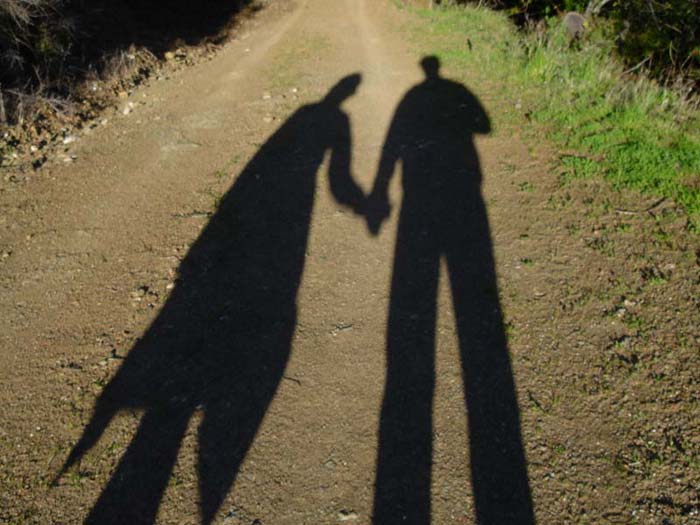
In 1848, the dead came home. A pair of teenaged sisters, Margaretta and Catherine Fox, heard weird rappings in their family’s farm house, at Hydesville, twenty-five miles north from the Friend’s final resting place. After a month of these late-night thumpings and knockings, the sisters discovered that the spirit would answer their questions by rapping in code. The neighbors gathered and witnessed the girls untangling the ghost’s story (a dead peddler, murdered by the former owner of the house, was supposedly buried in the basement). That summer, the cellar was dug up and certain cryptic evidences were found, but never shown to anyone beyond the family. An older sister, Mrs. Leah Fish, then took a hand in transforming the local curiosity into a national craze. She introduced the girls, by many accounts quite beautiful when swept into their mediumistic trances, into Rochester society. Quakers, Universalists, Swedenborgians and others on the religious fringe soon took up with the sisters’ spirit-rapping cause.
The Foxes were soon doing six hours of seances a day. With up to thirty people at a time in the room, each paying a dollar for the privilege, it became clear that a celestial gold mine had been opened when they dug up the cellar floor. Other manifestations of ghostly invasion too appeared. Mediums spoke in tongues, musical instruments played themselves, bells rang, tables turned in mysterious ways, and others beside the Fox sisters allowed the dead to speak through. At the peak of the wave, York State had a third of a million believers.
By the turn of the twentieth century, the craze had died down, but in Rochester stood the largest spiritualist church in the world. Gone now, bulldozed in 1954 to make room for an expressway, it was for decades the mother church of spiritualism. Now every day, thousands of cars, including mine, zoom through the ectoplasmic remains of the gorgeous gothic edifice, with its shadow-looming interior and huge spiky spire.
All that remains is a granite obelisk - roughly twenty feet tall, solid and doom-gray - with a plaque which states:
“Erected Dec. 4, 1927 by the spiritualists of the world in commemoration of the advent of Modern Spiritualism in Hydesville NY in 1848 and in tribute to mediumship, the rock upon which demonstrable spiritualism forever stands.
There is no death
There are no dead.”
This may be true, but two photos I found of the Fox sisters’ cabin - taken in 1905 - conjure up something far more complex, and troubling.
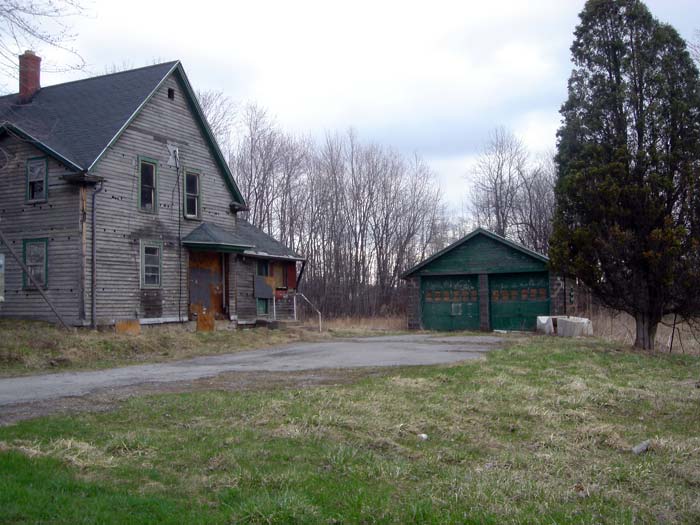
One is an exterior shot showing a rattletrap country shack in high weeds. There’s a sign over the door but even with a magnifying glass, I can only read one word: “spiritualist.” A tree shades much of the front of the house, but the side is in full sunlight, bleached white.
The second photo was taken inside and shows an empty house with bare plank floors and whitewashed walls. A raw board door is open, with eight ascending stairs visible. Through another doorway I saw a window brilliant with glare. There’s a light in the room, a kind of quaking glare that hints at a numinous presence.
Of course the same effect could be recreated by the blandest amateur misfire. And yes, spiritualists have a long history of falling for pathetic faked images. I’m not claiming that the photographer caught some spirit in his camera. I’m not claiming that holy ghosts are floating as they float in the white void of little country churches. But if the Masonic Dream Engine was still working in 1905, then this is ancient Egyptian desert blaze captured in a backwater York State shack.
The shot is striking for the way it captures blank emptiness. There’s nothing in the room but dust and intense summer heat, late afternoon sunglare in a dirty window. Still, I keep coming back to that image, searching it for something I may have missed. A hazy image of Osiris in the quicksilvered glass?
I’m the lone mourner, the lone witness, the lone nut. I see blank vistas out of the corner of the eye. I hear the Masonic harmonies out of the corner of the ear. Aural mirror image: Trazom and ectoplasm, musical goo oozing out of the soul-wound, bioluminescent spirit slime.
* High Egypto seen in the Magic Mirror is Masonry.
* Masonry seen in the Magic Mirror is Mormonism.
* Mormonism seen in the Magic Mirror is Hillbilly Hoodoo.

I have made my pilgrimage alone to the Hill Cumorah, Mormon high holy ground. And I have had the entire shrine, the angel-crowned obelisk, the countryside vista, the black cat who appears out of nowhere, all to myself. Here it was, in a farmboy’s imagination, that thousands fought and died: armies of ancient lost-race American Indian predecessors. The battle of all battles, Ancient American Armageddon right here on this sleepy drumlin.
In the summer, the Hill Cumorah pageant draws ten thousand visitors a night, half of them curiosity seekers from nearby areas and half of them who’d traveled from around the world to witness this two-hour reenactment of The Book of Mormon’s highlights. To find an equivalent, you’d have to put on the Omerammergau pageant in Jerusalem, with a cast of young men in traditional Mormon shocktroop uniforms - black pants, white shirt, neat ties and zomboid gazes - and hypnotized Las Vegas showgirls.
Off season, the place has the feeling of a well-maintained, if desolate, state park. But in 1823, when Joseph Smith received his first divine message here, this place was still rough woods and farmland. Dirt roads, unpainted shacks, split log fences, barns and hay mows scattered about, a crude and largely forgotten backwater domain.
Seventeen year old Smith, racked by religious guilt and doubts, and gifted with a fervid imagination, stood on the place he named Hill Cumorah and received the golden plates on which was inscribed the story that gave birth to his empire of Latter Day Saints.
Though Mark Twain called The Book of Mormon “chloroform in print,” what spun off would fill a dozen volumes of cheap melodrama: visions of God the Father and Jesus, lost treasure exhumed and examined, farms sold and cash delivered, contradictory testimony and accusations of fraud, pledges of secrecy, death threats, fleeing lovers, a conjureman with “magic peepstones,” affidavits proclaiming the authenticity of the “reformed Egyptian script” in which the Golden Bible was supposedly written, flight, madness, and finally murder.
Most of that gets left out of the pageant, which goes more for a leaden imitation of the King James Bible, albeit one filtered through the sensibility of a hypertrophied high school production. People come with lawn chairs and picnic coolers to see this evening of bad acting, elephantine production, and laser shows. The Hill Cumorah Pageant is our clumsy Magic Flute, crowded with absurd, obscure Masonic symbols: a trial by fire and water, a great pyramid with the all-seeing eye on top, the three-linked chain of brotherhood, moons, skulls, and secret handclasps.
At the end. a kitsch Christ descends from the sky. It’s like nothing so much as Elvis taking the stage amid the booming chords of Also Sprach Zarathustra. Or Sarastro, in The Magic Flute, flanked by a chorus of Germano-Egyptian priests, singing
“In these holy halls ...”
Mozart has left the building, left his body, left the Teutonic homeland.
And I have left reason far behind. I have traveled the back roads of the Burnt Over District, hunting for my angel. Hundreds of miles, back and forth, dragging spirit-spoor, vaporous soul contrails, the wisps of spectral plasm. Some day I’ll come back home with an angel strapped over my car fender. A twelve point Seraphim, still leaking golden ichor.
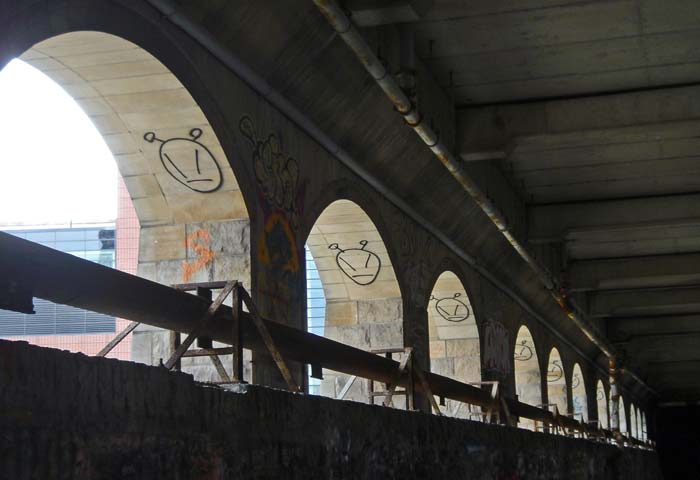
Or I’ll merely accept a simpler gift: an hour of solitude, cool air and wind, in Mt. Hope. It had been raining off and on all day, but during a break, I stopped at this Rochester cemetery, parked in a spot where I’d never stopped before, and walked upwards, inwards, to a place I’d never seen before.
Very isolated. Three tombs in a hillside avenue, long wet grass, tree branches sagging with their burden of raindrops. And above me the sighing and hissing of the wind-shaken leaves. Enough natural sound to drown out the noise of the city, which surrounds the cemetery on all sides but which seemed very far away that day.
I walked in Mt. Hope slowly, at first going in a straight line, up and down the steep hillsides. But then I let go of my linear path and with no real direction, followed a few narrow trails, climbed skewed stone stairways, read the grave markers, breathed in the cold, damp air.
It was a gift. A place of sad beauty and melancholy peace: misty, overgrown, meandering, asymmetrical. Here and there pockets of deeper green, steep inclines, a cluster of three or four stones under weeping branches. Pathways to nowhere, an avenue of sealed tombs.
I felt like I’d stumbled into some lost city. The makers were long gone, but a few traces remained.
Names, water, stones.
Lambs, draped urns, a hand pointing to heaven.
Cold air, damp grass, the ceaseless sighing of the trees.
I looked up and it struck me that the trees were vessels and chambers of vast lungs. The wind came and it seemed that the trees were taking a breath, inhaling, drawing in the wind. The branches swayed together, pulling upward. The leaves trembled and shook, as though with eagerness, and the whole of the leafy overhead expanse was one huge inhalation.
It seemed that God was breathing into that place. Breath and spirit: in Hebrew it’s the same word. Breath, spirit, wind and mind. And the trees themselves were accepting this breath.
A gift. This is perfectly clear to me now. God was breathing into that place, and into me too. And so, brought into a receptive state of mind by what I’d seen and felt, I cupped my hands and held them out, as if to receive and hold the gift.
Later, in Mt. Hope, I saw a stone hawk atop an obelisk. I’d been to that spot many times and never noticed the carved bird. Then it moved slightly, fluffed its wings and turned its sharp-billed face toward me. It was alive, and more than alive. A messenger from the land of the dead, regarding me with a mix of cool curiosity and disdain.
“I am Horus, protector and god of the sky. Moon and sun and wedjet eye.”
I stood there a long time regarding the hawk as he regarded me. It was near sunset and it was as though the dusky air had taken on the granular, grayish quality of stone. The bird itself, the avatar of the god, was stone too, though living stone. And the obelisk had a kind of life to it now, not softened or weakened, but filled with necromantic dusklight power.
Eventually the hawk flew off, back to the moon, which was just rising through the graveyard trees.
In a like wise, Mozart was carried by the hawk called Horus to the new world, where he planted his golden seed on the Holy Drumlin, where it sprouted, grew and eventually came to fruition as the golden plates.
This, then, is my Requiem. Prayer for the dead angel, who is both the Masonic Wonderboy gone to seed and his latter day manifestation: lighting on the top of a backwoods hillock, with a brain full of mystic capers, churning five-part fugues, glamour (that is: spells of power), singspiel and Masonic syncopations.
Mozart Amadee Zartmo Gottlieb Beloved of God.
Mozart is my guardian angel
cool as Nordic blue
sleek as December midnight
all in white
even his hair
even his skin
even his soul
even his shroud
even his assurance
even his Germanic harmonies
even his choice of E flat major
This then is the Whiteness of the Wail: a cry for Heaven, for the endless deeps whence monsters (divine portents of misfortune) are born, whence the music of the spheres comes to take me home. This is the cry from the cranium, the chiming of the struck obelisk, stone tuning fork making the pure E flat vibration.
About the Author
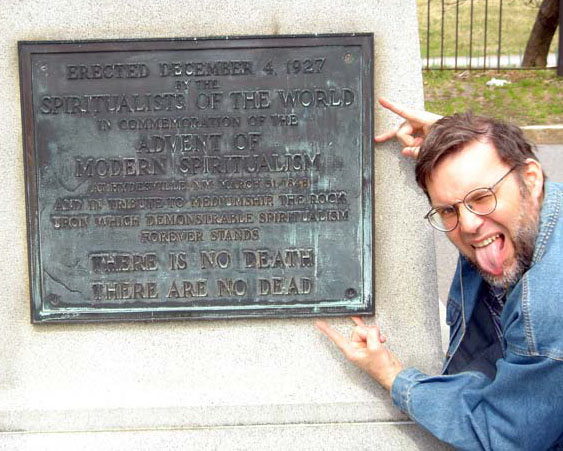
Th. Metzger studied infinity and the fourth dimension with Rudy Rucker in the 1970s. He has since committed a number of bizarre investigative and novelistic forays, including Shock Totem, Drowning in Fire, This is Your Final Warning, The Birth of Heroin, and Blood and Volts. He lives in the Burnt Over District of New York State and is a student of the the area's lost spiritualist history.
Post a comment on this story!